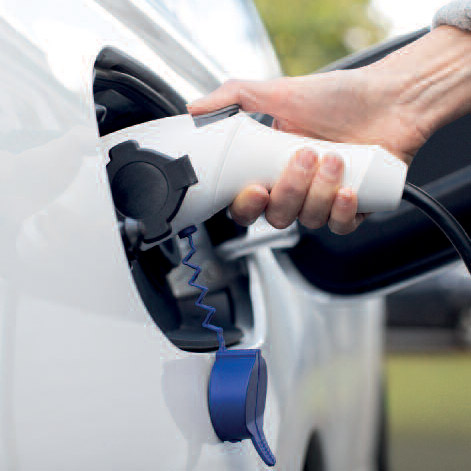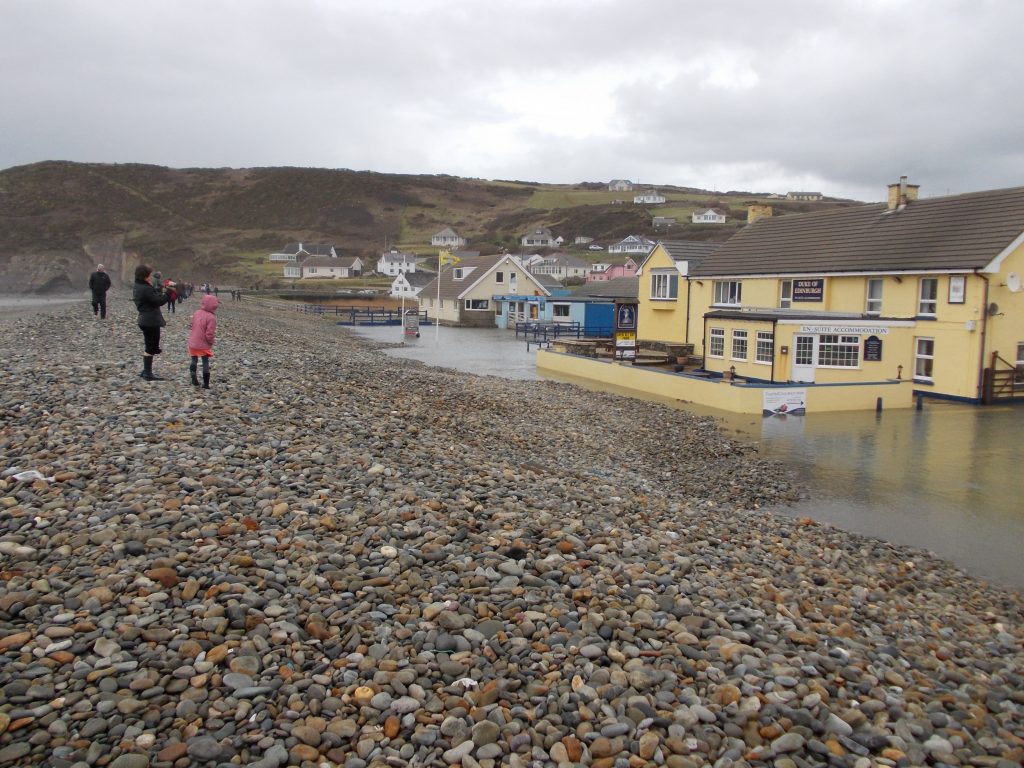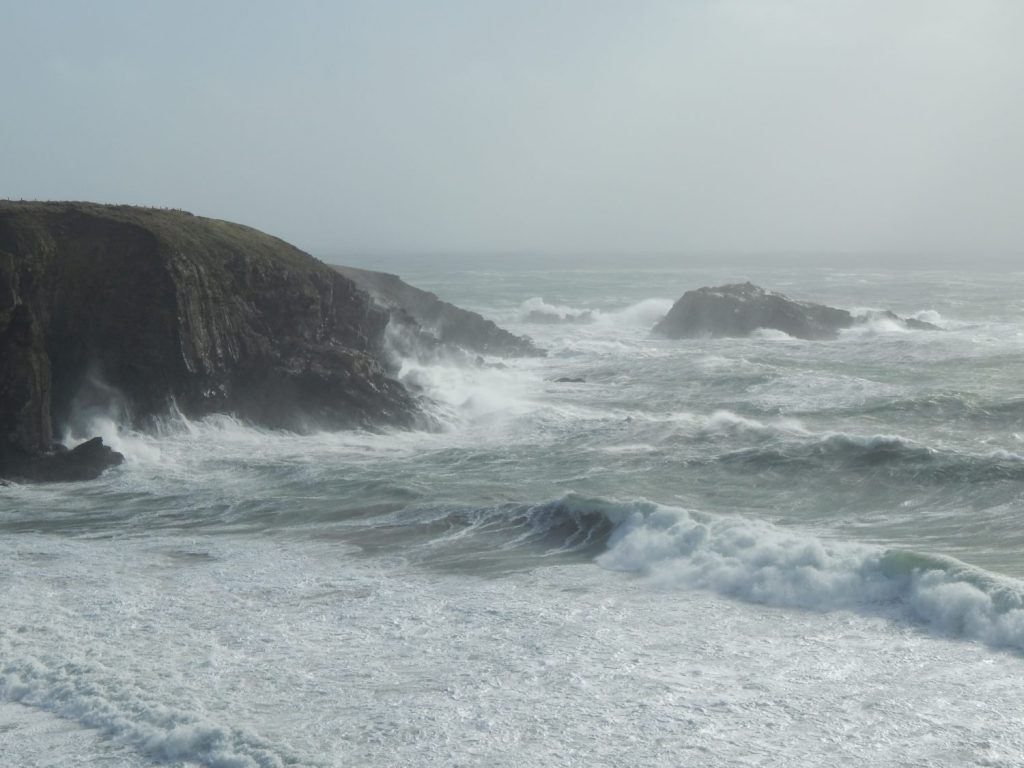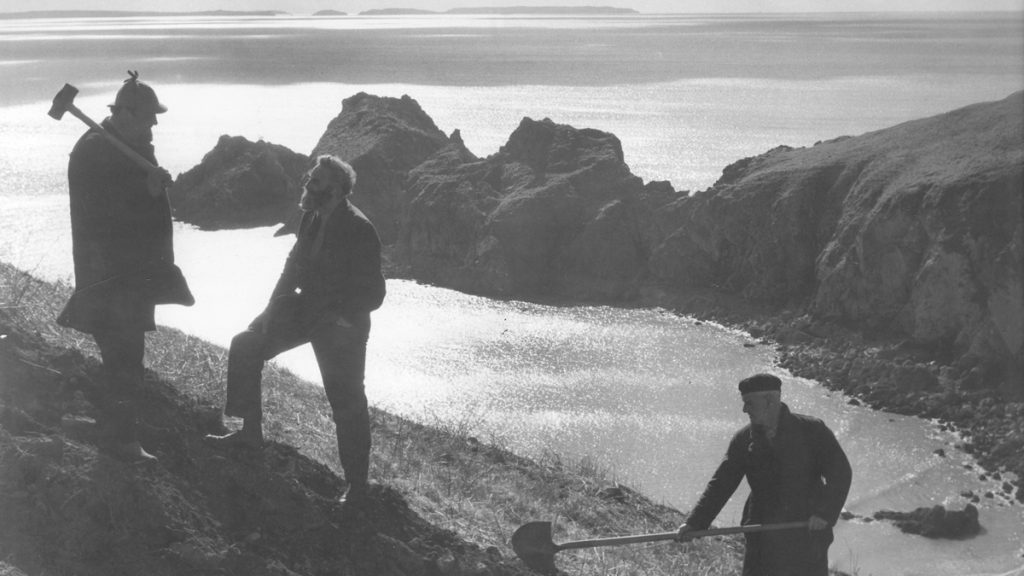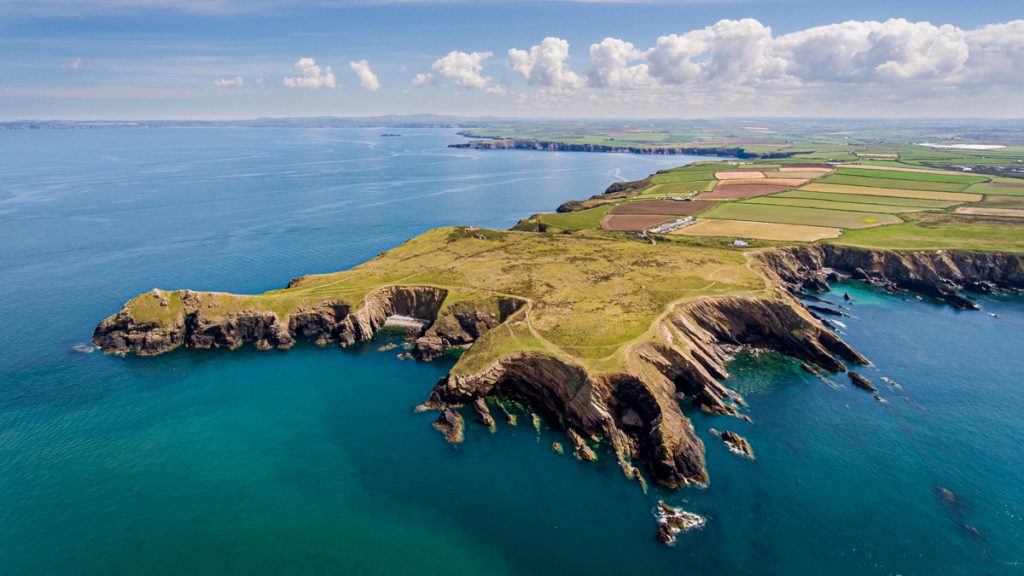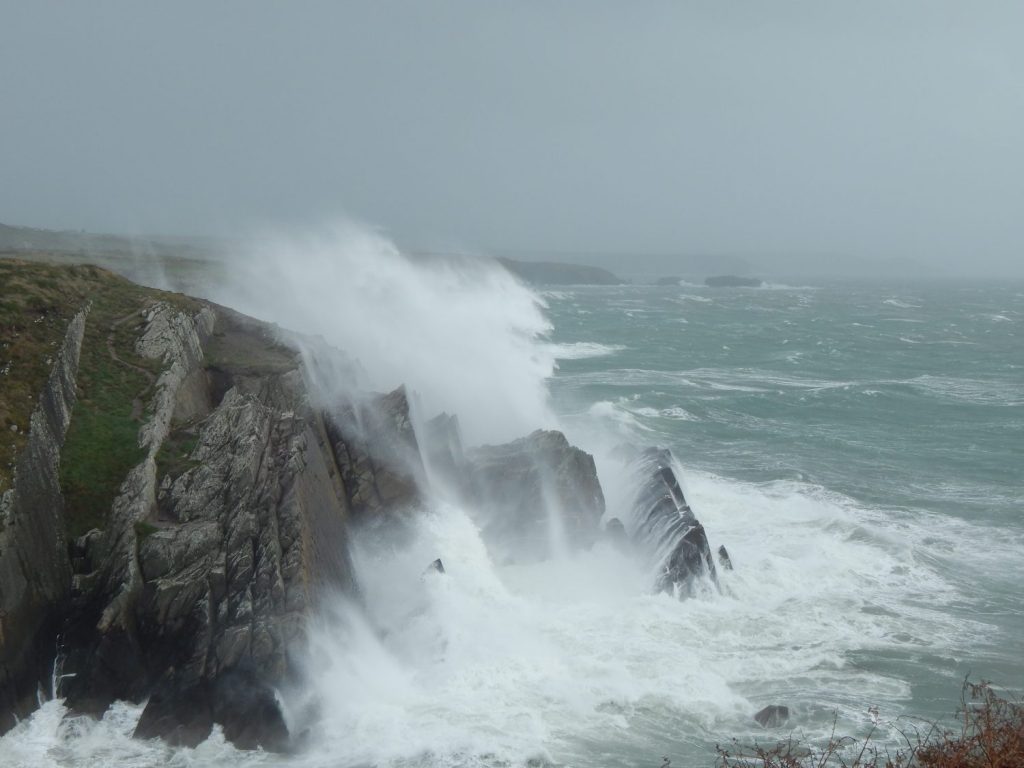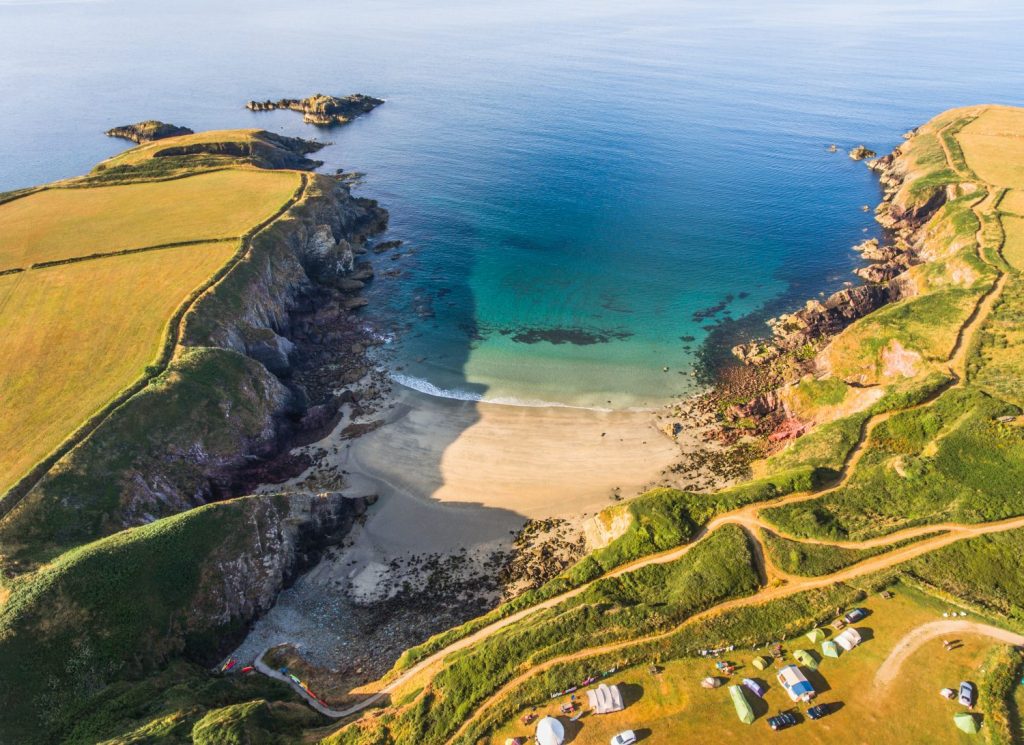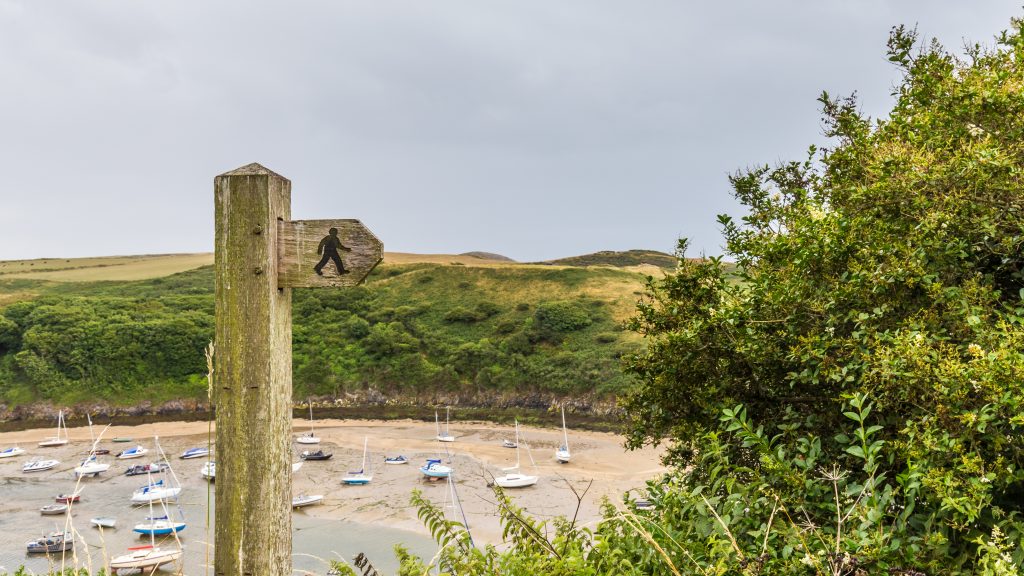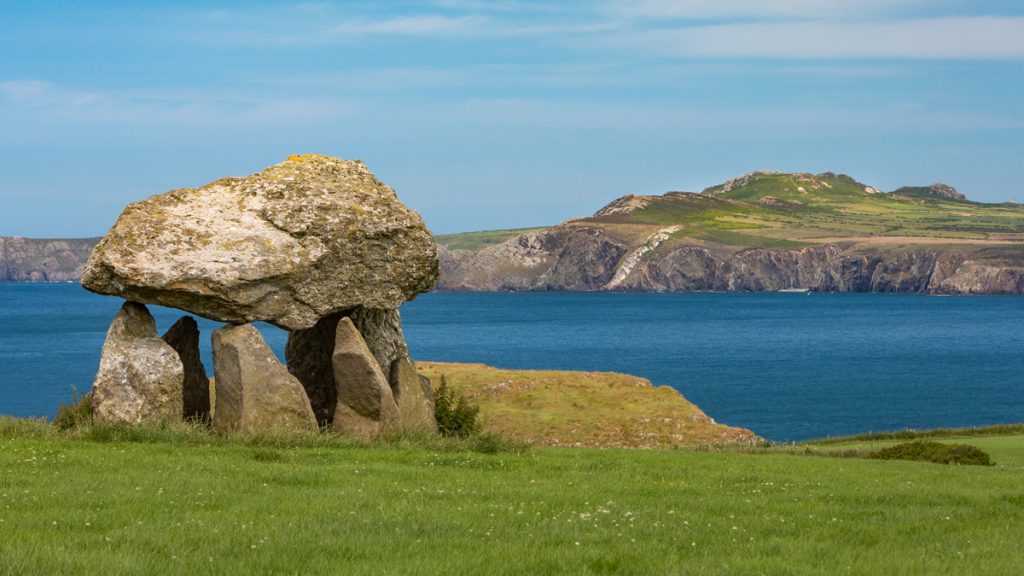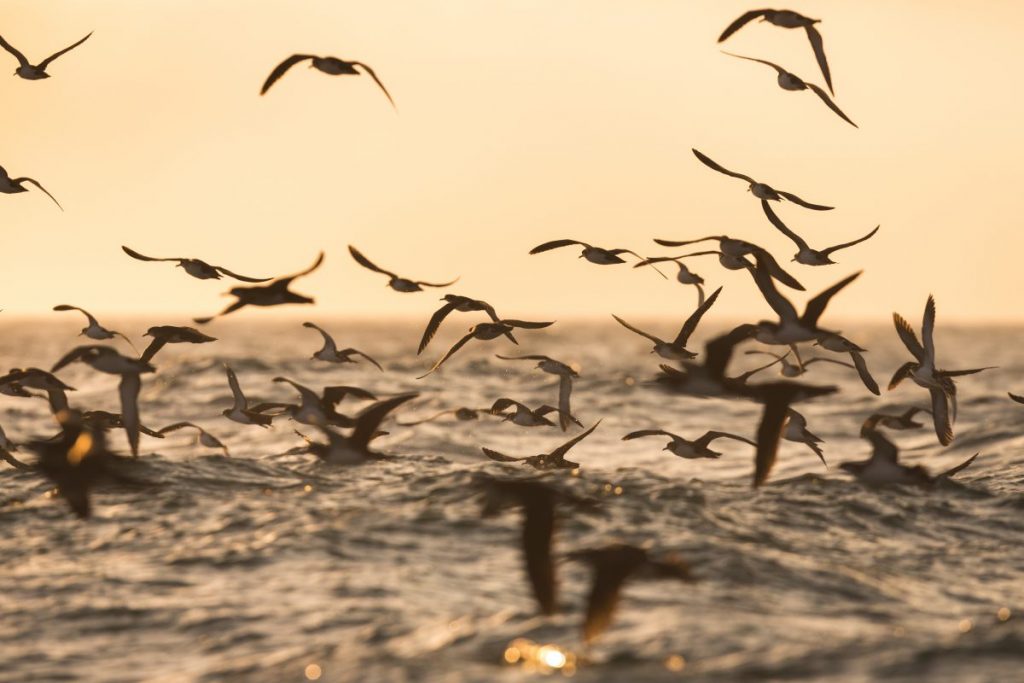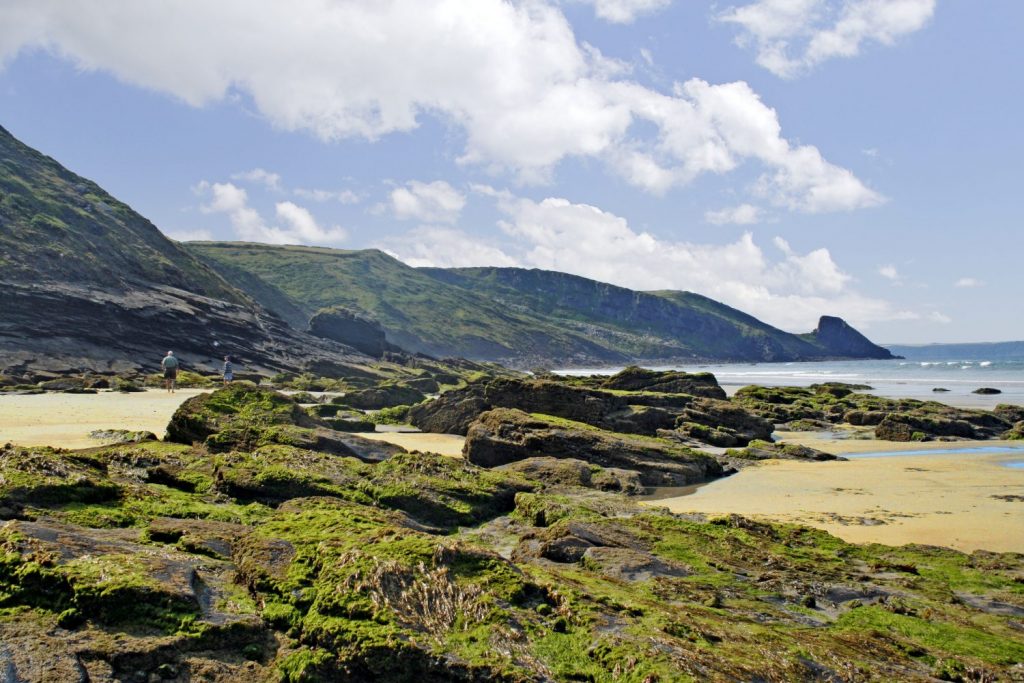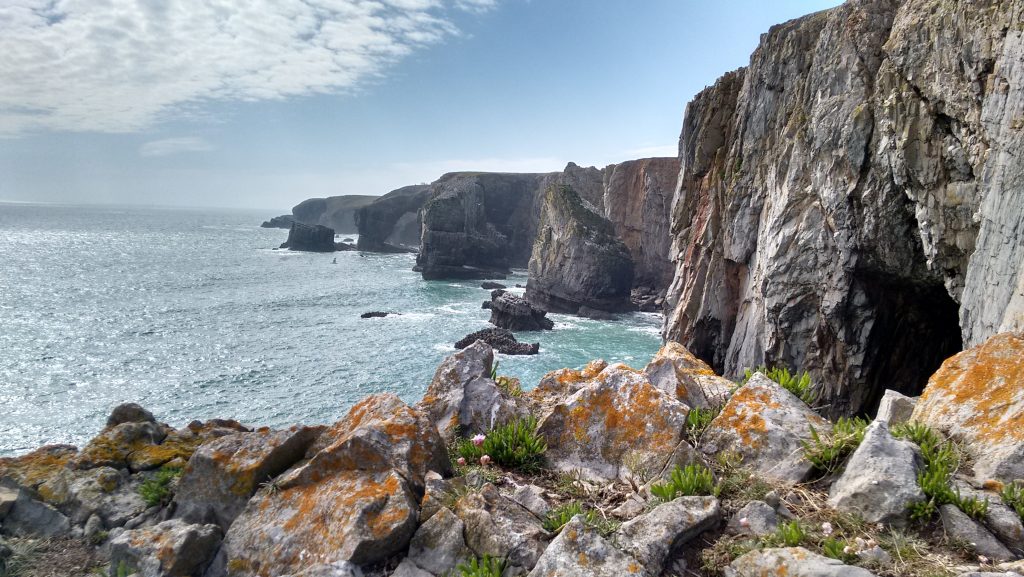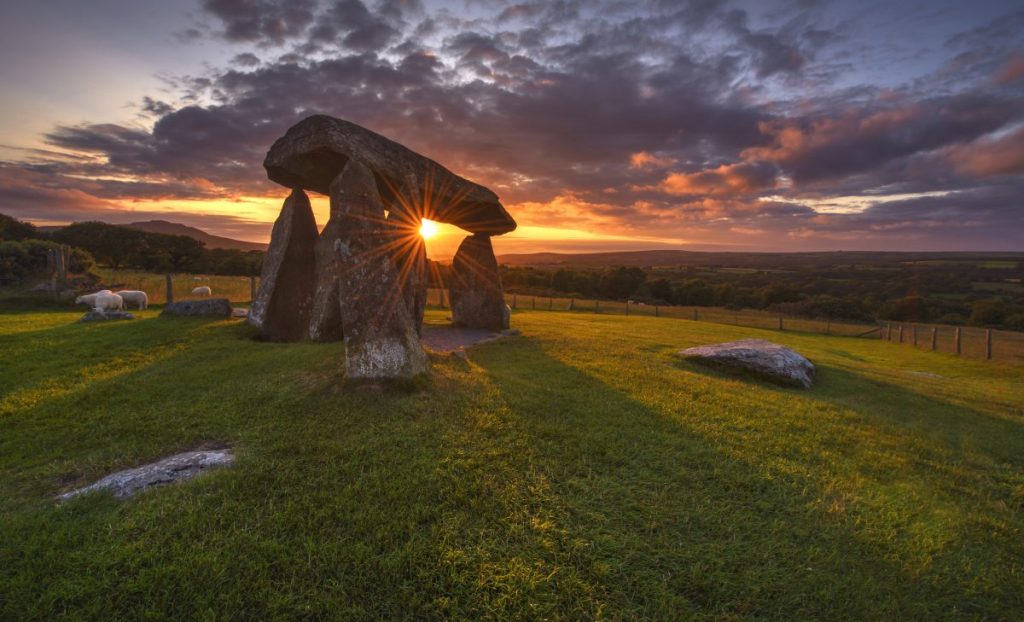We are always trying to find different ways of working so that we use less resources. The world's resources are not limitless, and if we do not think carefully about how we use them they could run out. In the same way we need to think about how much energy we use. These ideas are part of the curriculum for sustainable development.
Sustainable development is about the future of the planet.
It’s about treating our planet as if we intend to stay! It’s about making wise use of our resources, and not wasting them.
The Pembrokeshire Coast National Park Authority is working hard, together with other National Parks in Wales and the rest of the UK to reduce the amount of energy it uses and how much waste it produces.
Some ideas are simple such as encouraging staff to leave their cars at home and use public transport, walk or cycle. Others involve working with other people such as the coastal bus service.
Coastal Buses
Pembrokeshire Coast National Park Authority is a partner in the Pembrokeshire Greenways Project, which was established to encourage local residents and visitors, of all abilities, to access and enjoy the countryside by sustainable modes of transport through walking, cycling, bus and train travel. One of the most successful projects established through the Greenways Partnership is the Pembrokeshire Coastal Bus Services.
Green Gallery
Oriel y Parc is the National Park’s award-winning visitor centre and gallery in St Davids. A clever building, from the design and appearance, to the materials used in its construction, Oriel y Parc was designed and built with sustainability firmly in mind. Click the link to find out more about the Oriel y Parc building.
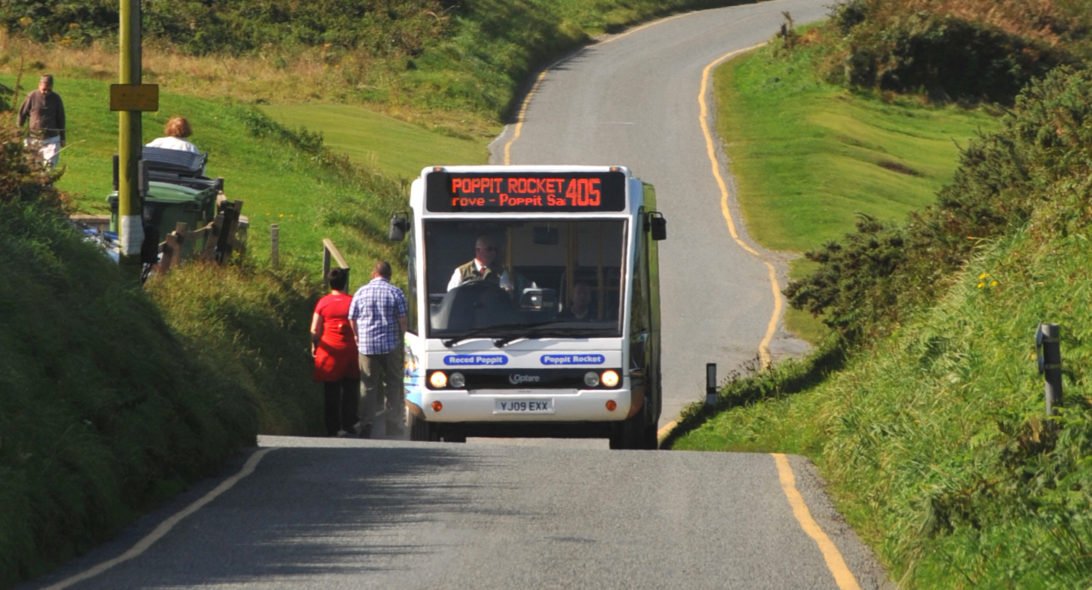
Green Headquarters
In 2004 the Pembrokeshire Coast National Park Authority moved from Haverfordwest to a newly-converted building at Llanion Park in Pembroke Dock. The building, which is more than 100 years old, is in red brick, built originally to serve as the Officers’ Mess for the army battalions stationed here for 60 or more years. Whilst it is very strong and solidly built, it was built at a time when sustainable development was not a phrase in daily use!
Photovoltaic solar panels on the roof of the National Park Authority’s Llanion Park headquarters.
It was decided at an early stage to try hard to include as many green features within the HQ as was possible with the money available. The Authority was able to include these green features in the conversion, resulting in a Display Energy Certificate band ‘B’ rating:
- A biomass boiler which runs on wood pellets, which are not fossil fuel, thus reducing the output of carbon dioxide from non-renewable carbon sources.
- A condensing gas boiler as a back-up. This is the most fuel-efficient type of gas boiler available. This only runs when the biomass boiler is out of service.
- Very high levels of wall insulation achieved by dry-lining all internal walls within the offices.
- False ceilings for some of the ground floor rooms and corridors, to reduce the volume to be heated.
- Additional internal roof insulation to Scandinavian standards, to reduce heat loss through the roof.
- Thermostatic valves on all radiators to achieve optimum temperatures in all rooms.
- Solar panels on the roof, to provide all hot water in summer and to assist with the heating of hot water in winter.
- A rainwater harvesting system which collects the rainwater from the roof into large tanks in the cellar, from which it is pumped to a header tank and used for toilet flushing, thus saving on use of mains water.
- Automatic lighting systems which only come on when someone enters a room and switch off automatically once it has been left empty for a few minutes.
- Use of locally-sourced timber where possible.
- Cycle racks for staff use.
Litter
The problems associated with litter are not unique to the Pembrokeshire Coast National Park and the same issues are faced across the country.
The staff and volunteers of the National Park work hard to keep the landscape of Pembrokeshire clean and litter free. They work closely with partner groups, such as Pembrokeshire County Council and community groups not just to keep the National Park clean, but to promote messages getting people to think about the mess they leave behind them. Generally, there are three types of litter affecting the National Park.
- Litter on land from members of the public. It is easy to think that a single dropped food wrapper is not a significant problem. But one piece of litter is seldom alone for long. Members of the public accidentally or even deliberately, leave behind all manner of waste, food packaging, discarded clothes, beach toys, bottles etc.
- Marine litter. This is a very significant source of litter on beaches, and can be best shown by the example of Frainslake Sands. This beach is in the MOD zone in South Pembrokeshire, and has no public access. Yet, the top of the beach can be knee-deep in plastic bottles, milk bottles, cleaning bottles etc, which have all been thrown overboard by ships. It is an extremely difficult source of litter to control and police as ships from all of the world pass by the coast of Pembrokeshire.
- Litter from animals. The most often complained about animal waste is dog mess. While there are many responsible dog owners, there are many more more who do not clean up after their pets, even where bags and bins are provided.
All litter is unsightly, and people questioned about their experiences in the National Park often mention when they have seen litter or mess, almost as if there is an expectation that a National Park should be mess free. Litter is also harmful to wildlife. The simple cotton wool bud which we use to clean our ears, is one of the most common waste items on local beaches. Flushed down the toilet, these small sticks eventually reach the coast, and offer a tasty-looking treat to marine animals and birds. But once swallowed they prevent the creature from feeding, and can even kill it. Litter is also harmful to humans. Glass and sharp metal cans are an obvious hazard, but what of dog mess? It is unpleasant to tread in, but can be dangerous to health.
There is no one solution to the problem of litter. The National Park, and the groups it works with, use a number of strategies. It is not enough simply to provide litter bins, and clean up teams. Nor do polite notices and fines work by themselves. These have to be supported by an ongoing educational message, promoted to visitors, shipping users and to local schools. Yet, even these are clearly not enough. The National Park Authority may do all it can to encourage people to clean up after themselves, and not to litter to begin with, but only a major shift in public attitude can truly solve this problem.
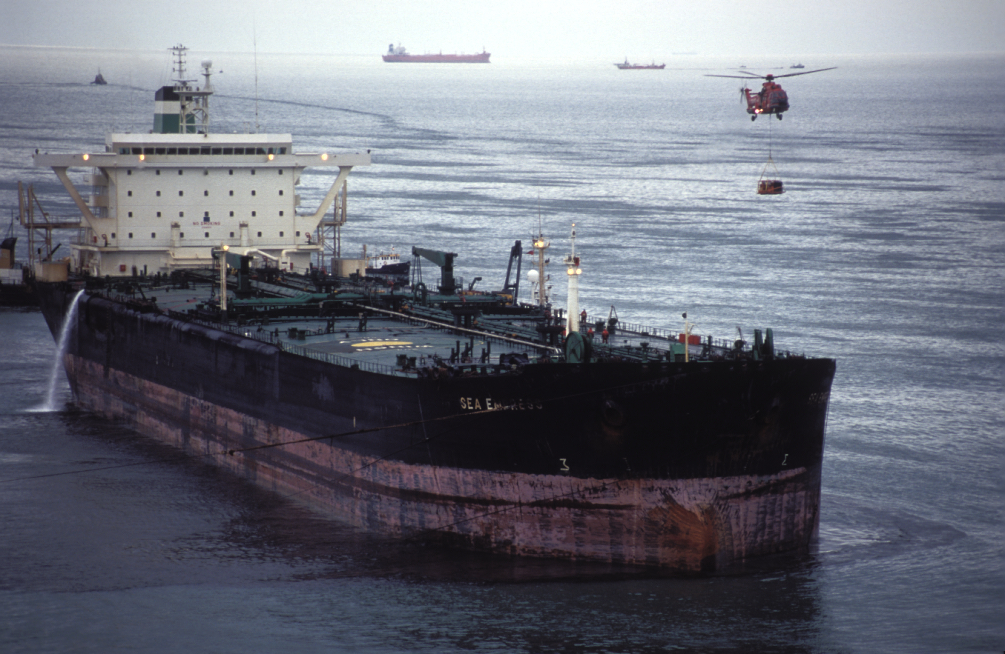
Pollution
The Pembrokeshire Coast is famous as a holiday destination, offering an unspoiled, beautiful landscape in which to unwind and relax from the rigours of modern living. It depends on this image to attract visitors to the county, and seeks to preserve and sustain the landscape so that future generations can enjoy the same pleasures. Visitors bring in an income, which in turn supports much of the population of the county. Consequently, any negative publicity can have a far-reaching effect on the county’s economy and on the National Park.
One such event occurred on February 15th 1996, when the oil tanker, the Sea Empress, wrecked on rocks off St Ann’s Head, at the entrance to the Milford Haven Waterway. Some 72,000 tonnes of North Sea crude oil leaked from the ship to coat the beautiful Pembrokeshire coastline. Yet such was the effort from all those involved in the clean-up operation, that by Easter 1999 visitors had a hard time identifying areas that had been affected. Even so, the shadow cast by the disaster has been long, and is still present in the memories of those involved. It is a reminder that any pollution can have a serious impact on the National Park.
The beaches and coast of the Pembrokeshire Coast National Park are recognised as being some of the best in the UK in terms of their natural beauty, clean environment and bathing water quality, building on recognition from previous years. Pembrokeshire boasts many Blue Flag beaches, the highest level of recognition. Blue Flag beaches not only offer high bathing water quality, but also facilities for people with disabilities, telephone access, a beach attendant or lifeguard and public information board. The Green Coast Awards recognised Pembrokeshire beaches for their beauty, cleanliness and bathing water quality. These beaches include places considered more remote to access. Pembrokeshire regularly exceeds all other parts of Wales for the number of beaches recognised.
Water samples are taken from beaches around the county to ensure that bathing waters meet or exceed the mandatory bacteriological standards. And it would seem that Pembrokeshire, without further oil mishaps, is set to continue to build on its success.
The challenge now, for all agencies working in Wales, national and local, is how to meet and adapt for future, and to sustain a special environment.
Renewable Energy
There is a growing awareness across Wales and the UK of the different ways that power can be produced. Pembrokeshire is home to an oil refinery, gas power station and LNG (liquefied natural gas) storage facilities, which are located outside the National Park boundaries. The county is also at the forefront of developing new renewable energy supplies, supplies that have less environmental impact. Some of these have benefited from funding from the Authority’s Sustainable Development Fund (SDF).
Renewable energy sources are those that have a minimal impact on climate and the environment, and are so called green energy sources. They use natural forces such as the sun, weather and the earth to produce energy. Renewable sources include:
- Biomass. This is the growing of vegetable matter, plants or trees, which are then burned to produce energy. This form of renewable energy is almost carbon neutral, because the carbon released during burning is offset by the carbon absorbed by the plant when it is growing. Biomass can include solid fuel – logs, wood chips or pellets, or can be made from crops that are processed into a liquid or gas. These latter crops tend to be sugar rich, such as sugar beet, or oil rich, such as soya or palm oil.
- Geothermal. This is the use of heat from deep within the Earth, and is extracted using deep wells and pumps.
- Heat pumps. Heat pumps extract heat from either the ground, air or water. These pumps work in a similar way to a refrigerator in that they use a coolant to move heat from one place – the ground, air or water – to another place such as a home or office.
- Hydro power. This is one of the oldest forms of renewable energy, long used to drive irrigation systems and water mills around the world. Obviously, hydro power requires a water source such as stream or river to drive it.
- Solar power. Photovoltaic systems are able to convert sunlight in to electrical power. They can be fitted to buildings and are silent and reliable.
- Wind power. The UK has 40% of the wind resources of Europe, and therefore is ideally suited to harness the power of the wind. The technology uses turbines to produce electricity.
- Tidal power. Like hydro power, this energy source has been used for hundreds of years, and in Pembrokeshire, Carew Tidal Mill is a reminder that the people of the county have long used the force of the tide. New technology is looking at siting turbines off the coast in areas of increased tidal flow, such as off headlands.
Pembrokeshire is ideally situated to benefit and make use of these renewable energy sources. Its geographical position, jutting out into the Irish Sea, and with a number of promontory headlands, means it can harness such sources as wind and tidal power. Individuals and companies are making use of solar power, wind power, heat pumps and hydro power. The National Park Authority has also made use of renewable energy sources at its offices at Llanion, and in the vehicles used by staff.
However, it has to be acknowledged that while these renewable energy sources may benefit the environment and people, they are not popular with everyone. People are concerned that some energy sources are unsightly, or may be noisy, while others may affect the delicate ecology of Pembrokeshire, especially the life that thrives on and around the offshore islands.
The National Park has a role, through the Local Development Plan, to regulate development within the National Park boundaries. The National Park Authority recognises that the National Park has a significant potential to supply renewable energy. Support for energy generation from renewable resources must be weighed carefully against the need to protect the built, historic and natural environment, including the coast, countryside, landscape and historic settlements, the amenity of local residents, agriculture and forestry.
